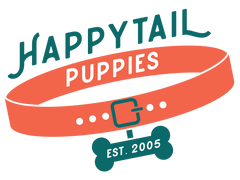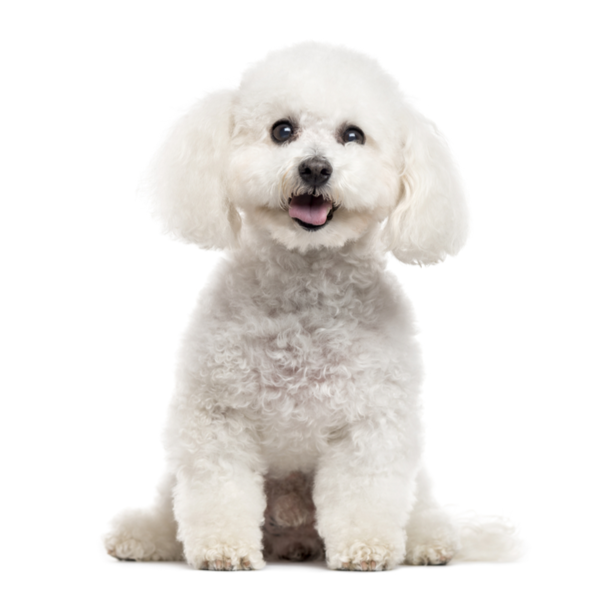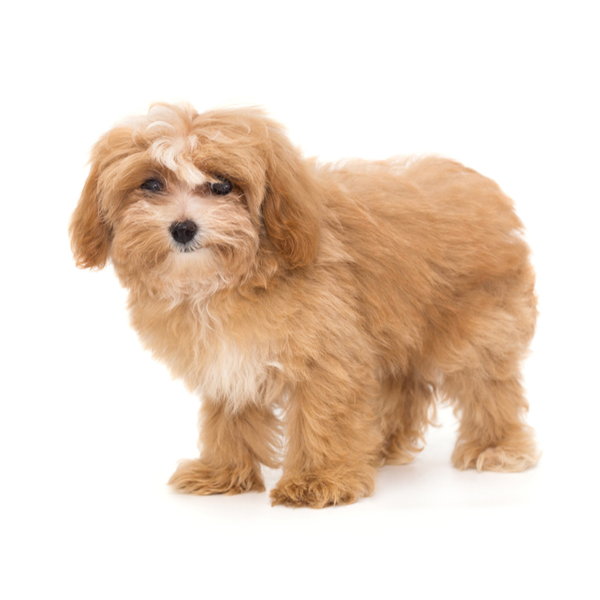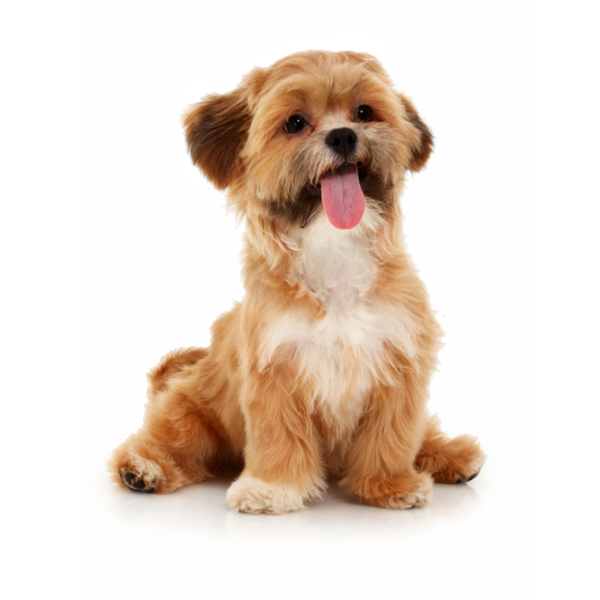
TEACUP BICH-POO PUPPIES FOR SALE
Friendly. Loyal.
Also called Poochon, Bichdoodle, Bichoodle, Bichonpoo, Bichpoo, and Bichondoodle, the Bich-Poo is a cross between the Bichon Frise and the Miniature Poodle. The result reflects the best qualities of the two breeds, including their curly, hypoallergenic coats. They are smart, energetic, and friendly, and they get along well with children and other animals. Their small size makes them readily adaptable to any environment, so expect them to thrive no matter the size of your home.
But that's not all! Our Teacup Bich Poo puppies come with a health guarantee, up-to-date vaccinations, and a comprehensive puppy starter pack to help you and your new furry friend get off to the best start possible. Don't miss your chance to bring home a Teacup Bich Poo from Happytail Puppies today! Contact us to learn more about our available puppies and the adoption process.

Temperament
They make great and loyal family pets and love to play with children and toys. They are affectionate, and they want nothing more than to please you and be your best friend. Their charm and wit are sure to keep you entertained.
They can develop separation anxiety, so don’t leave your Bich-Poo alone for too long. They also make good watch dogs, alerting you of any suspicious noises.

Appearance
Bich Poos typically have loose, medium-length, curly fur and a coarse coat. They do not have an undercoat, making them a good choice for those with allergies. (Let’s be clear though: there is no such thing as a hypoallergenic dog.) Their coats can be variations of:
- Tan
- Brown
- White
- Black
- Black and white
- Tan and white
The Bich-Poo typically grows to be 9 to 14 inches tall and weighs between 6 and 12 pounds.

Exercise
They do experience spurts of energy, and that daily physical activity will help them work it out. If they don’t have access to a backyard, they may require a bit more exercise time.
Try a short hike, a visit to the dog park, or a playdate with another pooch for added exercise and mental stimulation.
We recommend 30 minutes of activity a day and about 8 miles of walking per week.
The Tale of Teacup Bich Poo Puppies
Although the history of many hybrid dogs isn’t long because they are modern breeds, the histories of their parent breeds are typically long and well-documented. This hybrid is a cross between the Bichon Frise and the Poodle.
• History of Bichon Frise
The Bichon Frise was created in the Mediterranean centuries ago. They were often traded, and that’s how they made their way around the world. In the 1300s the breed became very popular with Italian nobility. France discovered the breed in the 1500s, and they were also treasured there. They made their way to and became popular in the Canary Islands in the 15th and 16th centuries. The 1800s saw a decline in the breed’s popularity, but there were efforts to restabilize the breed after the First World War.
• History of Poodles
The Poodle was developed in Germany as a working dog adept at retrieving waterfowl. It worked as a truffle-hunter in France as well. Poodles have an undeserved reputation as very fancy and regal companion pets, but the breed is actually very athletic and talented at many canine sports. They are known for and bred for their intelligence, with makes them great candidates for parenting crossbreeds like the Bich Poo.
Understanding The Health Concerns
Knowing about the possible health issues present in Teacup Bich Poo puppies is important to offer them the best care and ensure their long-term well-being.
Major Health Concerns
- Addison's Disease: Also termed Hypoadrenocorticism, it is the condition taking place where adrenal glands fail to generate sufficient hormones, leading to weakness, lethargy, and gastrointestinal issues.
- Cushing's Disease: Hyperadrenocorticism, or Cushing's disease, involves an overproduction of cortisol by the adrenal glands. Symptoms include increased thirst and urination, hair loss, and muscle weakness.
- Corneal Dystrophy: This inherited eye disorder affects the cornea, leading to cloudiness or opacity, which can impair vision and cause discomfort.
Minor Health Concerns
- Cataracts: A common eye disorder in dogs, cataracts involve cloudiness in the lens, which can lead to impaired vision if left untreated.
- Legg-Calve-Perthes Disease: This condition affects the hip joint, causing degeneration and leading to pain and lameness.
- Immune Mediated Haemolytic Anaemia (IMHA): IMHA is an autoimmune condition where the body attacks its red blood cells, leading to anemia and potentially life-threatening complications.
Caring for Your Teacup Bich Poo Puppies
Regular maintenance is important to ensure the well-being of your Teacup Bich Poo puppy to keep them happy, healthy, and looking at their best.
• Grooming
Bich-Poos, known for their hypoallergenic qualities, require regular grooming to maintain their coat's health and appearance. Brushing once or twice a week helps to eliminate knots and tangles, preventing matting. Regular bathing is necessary, and a trim or clip every two to four months keeps their coat neat and manageable.
• Ear Care
Due to their susceptibility to ear infections, it's essential to check and clean your Teacup Bich Poo puppy's ears weekly. This helps prevent buildup of wax and debris, reducing the risk of infections and discomfort.
• Nail Maintenance
Keeping your puppy's nails trimmed is crucial for their comfort and mobility. Trim nails once or twice a month or when you hear them clicking on the floor as they walk.
• Oral Hygiene
Maintaining good oral hygiene is vital for your puppy's overall health. Brush your puppy's teeth at least twice a week, ideally daily, to prevent dental issues and keep its breath fresh.
Frequently Asked Questions About Teacup Bich Poo
How Big Do Bich Poo Puppies Get?
Bich poo puppies are even called Poochons. They generally grow between 9 to 15 inches tall at their shoulder and weigh around 10 to 20 pounds when they grow completely. Their size varies on the basis of their lineage, specifically the size of their Poodle parent.
Does Bichpoos Bark A Lot?
Bichpoos are generally moderately vocal. They would often bark to alert their owners of strangers, during play, or whenever they need attention. Appropriate socialization and training at a younger age help to manage and reduce excessive barking behavior.
What Kind Of Dog Is A Bichpoo?
Bichpoo, also known as Bichon Poodle or Poochon, is a hybrid breed that results from crossing a Bichon Frise with a Poodle. They are affectionate, small, and intelligent dogs, as they are known for their friendly demeanor, curly coats, and suitability as companion pets.
Are Bich Poo Puppies Easy To Train?
Bichpoo puppies are typically easier to train due to their eagerness and intelligence to please their owners. Their Poodle ancestry contributes to their quick learning ability, whereas their Bichon Frise side adds to their affectionate and playful nature. At Happytail Puppies, we also offer comprehensive training programs that can help your pup develop obedience and good behavior.
Are Bichpoos Hypoallergenic?
Bichpoos are hypoallergenic due to their Poodle ancestry. Their low-shedding coat reduces the amount of pet dander in the environment, making them a better choice for people with allergies than many other breeds.




